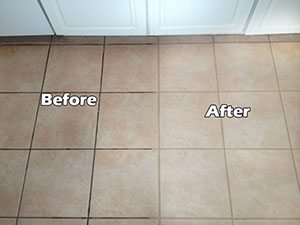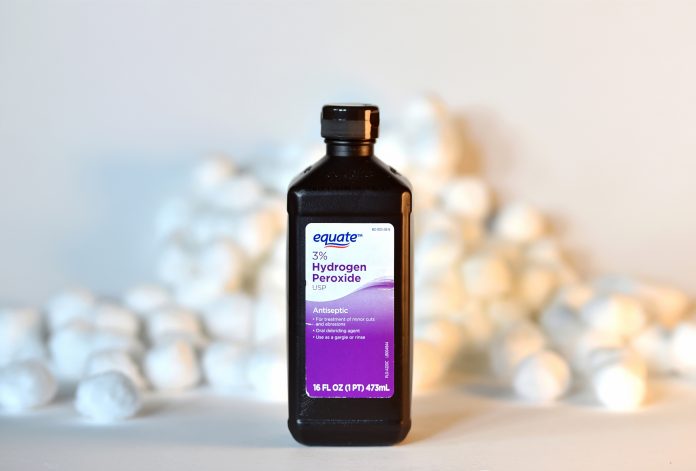Chances are, you have a bottle of hydrogen peroxide in your medicine cabinet or first aid kit, or maybe even with your supplies for cleaning. This popular household item is also known by its chemical name H202, and is usually found in pharmacies and pharmacy supermarkets. It is commonly found in homes because it has several different applications, and compared to many other products that fulfill the same purposes it is quite safe and effective. If you don’t have a handy bottle of hydrogen peroxide right now, here are a few reasons you might consider grabbing some at the next opportunity available.
Health Applications
- Wound cleansing – One of hydrogen peroxide’s most frequent uses is for wound treatment. Its antiseptic properties help to minimize infection risk and the bubbling action helps to fizz out any foreign particles.
- Cure boils – Those painful abscesses filled with puss are also treated with hydrogen peroxide. .
- Substitute mouthwash – Hydrogen peroxide can be used in the absence of more conventional mouthwash to help kill bacteria that live in the mouth, causing bad breath and decay in the tooth. Here is everything you need to know about dental care after SHTF.
- Get rid of ear wax buildup – Use a few drops of hydrogen peroxide and then a few drops of olive oil to help remove ear wax from your ears. But be sure to first ask your doctor about this!
- Eliminate foot fungus – Kill foot fungus by spraying feet with a combo of hydrogen peroxide and water nightly.
- Get rid of mites – While mites aren’t super-common in the developed world, you can use hydrogen peroxide to get rid of them.
- Reduce the risk of swimmer’s ear – To help keep this painful ear infection away, drop a couple drops of a combination of vinegar and H202 in each ear after swimming.
- Help other ear infections – You can use straight hydrogen peroxide dropped into the ears to help eliminate other types of ear infections, as well. Keep in mind that your doctor should be your go-to when you suspect an ear infection as they can be serious.
- Kill canker sores – These miserable mouth sores can be made better by swishing H202 around in the mouth for a few minutes.
- Drying up weepy rashes – It can be used, diluted appropriately, to help dry up weepy rashes like poison ivy.
Related: The Health Benefits of Prickly Ash
In the Bathroom
 Tile cleaner – Spray straight hydrogen peroxide on tile to clean it and help eliminate stains.
Tile cleaner – Spray straight hydrogen peroxide on tile to clean it and help eliminate stains.- Eliminate toilet bowl stains – There’s nothing more disgusting in this world than a gross looking toilet, even though you’ve washed it up. Help get rid of those stains by pouring a half H202 bottle into the bowl and making it sit for half an hour before scrubbing and flushing.
- Bleach grout – Make your tile sparkle by using hydrogen peroxide and baking soda to create a cleaning paste. Scrub with a toothbrush and rinse thoroughly.
- Disinfect toothbrushes – Many disinfectants absolutely don’t belong in our mouths under any circumstances, but you can use hydrogen peroxide to clean toothbrushes for a bacteria-free brushing experience.
- Kill mold – Spray it on hard surfaces that are showing signs of mildew or mold growth to stop the growth and eliminate discoloration.
- Glass cleaner – It can be used to clean grubby glass and mirrors. Just spray on and wipe away grime.
- Clean slimy bathtubs – Get rid of the grimy, soap-scummy ring around the tub by spraying hydrogen peroxide on and letting it sit for a while before scrubbing and finally rinsing.
Related: Sour Tea Helps You Avoid High Blood Pressure
Kitchen Uses for H202
- Disinfect cleaning gear – Rags and sponges are a breeding ground for bacteria. Soak them in H2O2 to kill those gross germs.
- Clean cutting boards – Another haven for potentially dangerous germs, cutting boards can be sanitized with hydrogen peroxide.
- Sanitizing countertops – All kinds of things, both those we want to stay clean and those that are admittedly germy touch our countertops. Make sure to clean them in between with hydrogen peroxide to disinfect.
- Clean produce – Fruits and veggies from the store can be covered in all sorts of things you don’t want to eat, and a soak in hydrogen peroxide can help remove those things.
- Make your fridge spotless – There are inevitable messes in every fridge, but hydrogen peroxide can help.
- Lunchbox cleaning – Have you ever opened a grubby, moldy lunchbox that was forgotten in a locker by a kiddo and fought not to throw it out? No worries, disinfect with H2O2.
- Keep your grocery bags reusable – These are great for the environment, but not great for your family’s food supply if they get yucky. Spruce them up and eliminate funk with a spritz of hydrogen peroxide.
Personal Use
- Bleach nails – You can use it to whiten discolored nails so that you can more effectively rock a natural nail look.
- Help remove calluses and corns – Feet get calluses and corns. It’s kind of a fact of life. You can soak your feet in hydrogen peroxide and warm water to help soften them up for removal.
- Teeth whitener – Also, it can be used for whitening teeth. Simply add a homemade hydrogen peroxide toothpaste and baking soda together and use it to help clean and whiten your teeth. To make this whitening strategy more palatable, you can even add a drop of essential oil to the mix! Just as for normal fluoridated toothpaste, DO NOT SWALLOW! Be conscious, however, that this is a short-term solution. Usage of this method could damage your teeth for a long time.
Other Household Uses
- Clean carpet – Once you’ve tested on an inconspicuous area for bleaching, you can use hydrogen peroxide to eliminate stains on light colored carpet.
- Spruce up your whites – Whites inevitably get dingy, but a little H202 will bring them back to their original glory.
- Remove funky, musty smells from fabric – Just spray on a highly diluted mix of hydrogen peroxide and white vinegar to eliminate fabric odors.
- Get rid of organic stains – Things like grass, red wine, and coffee can cause stains in your fabrics, but a little hydrogen peroxide can help eliminate them from light fabrics.
- Disinfect humidifiers – Humidifiers can be perfect for your well-being, but they can be harmful when they’re run while dirty. Clean yours once a week with hydrogen peroxide to keep accumulation of molds and bacteria at bay.
- Aquarium cleaning – It can be used to clean aquariums so long as you follow safety instructions to keep your fish healthy.
- Help seeds grow – Hydrogen peroxide can be used to help seeds germinate and, highly diluted with water, can help plants develop healthy roots.
- Pet wound care – It can be used on pets the same way it’s used on human wounds.
- Disinfect toys – Kids put stuff in their mouths, and it makes toys a harbor for bacteria if not cleaned regularly. You can use diluted hydrogen peroxide for that.
Be forewarned: Taking hydrogen peroxide indoors may be harmful, and you should always talk to your doctor (or veterinarian in the case of your animals) before using home remedies such as those mentioned above. It will also bleach everything from your skin to fabrics, so be careful.











